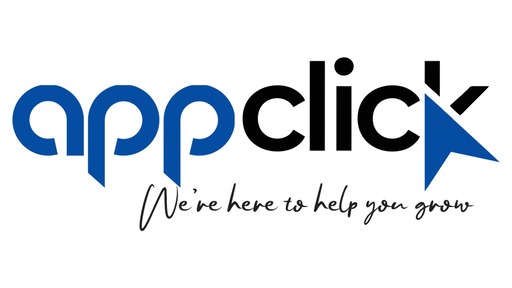Social media marketing, also referred to as digital marketing or e-marketing, is the process of using social media platforms where people create social networks and exchange information to improve a business’s online presence, boost sales, and improve website traffic. SMM involves built-in data analytics capabilities that enable marketers to monitor the effectiveness of their advertising efforts & find new opportunities for engagement, in addition to giving businesses an opportunity to connect with current customers and attract new ones.
Why Does Social Media Marketing (SMM) Have Such Effects?
Social media’s unmatched potential in three key marketing domains connection, interaction, & customer data—is the driving force behind social media marketing.
Relationship
Along with to giving businesses opportunity to a previously unavailable level of interaction with customers, social media offers a staggering number of channels through which to reach target audiences, including microblogging websites like X to content platforms like YouTube and social media sites like Facebook.
Interaction
Social media engagements are dynamic, providing for both direct communication and passive liking. This dynamic allows businesses to take advantage of free advertising opportunities that arise from recommendations made by current and potential consumers through electronic word-of-mouth, or eWOM. The fact that these relationships take place on social networks renders them observable, in addition to being a valuable motivator of consumer decisions due to the positive transmission impact from eWOM. Businesses, for example, can calculate their social equity, which is the ROI (return on investment) from their social media marketing campaigns.
Client Information
Consumer information is another essential instrument that an efficient social media marketing plan provides to improve marketing outcomes. SMM ideas are capable of collecting customer data and converting it into useful market analysis, or even generating new tactics, so don’t be frightened by the 3Vs of big data (volume, variety, and velocity).
The Operation of Social Media Marketing (SMM)
Social media transformed how people communicate and how businesses can influence consumer behaviour as platforms like Facebook, X, and Instagram gained popularity. These platforms let businesses to promote content that promotes engagement and extract personal, demographic, and geographic data that helps messaging resonate with users.
SMM Action Schedule
Your SMM strategy is going to succeed more if it is more targeted. Leading social media management software vendor Slideshare suggests the following course of action to create an SMM campaign with performance indicators and an execution framework:
1.Align SMM objectives with specific business goals
2.Identify your target market’s demographics (age, location, income, job title, industry, and interests).
3.Perform a competitive analysis of your competitors, taking into account their achievements and failures.
4. Audit your present social media marketing strategy.
5. Establish a schedule for distributing SMM content.
6. Produce top-notch content. 7. Monitor results and modify SMM tactics as necessary.
Relationship Management for Customers (CRM)
Social media marketing (SMM) has a number of distinct advantages over traditional marketing. One such advantage is the ability to use customized customer relationship management (CRM) technologies for both customer-to-customer and firm-to-customer interactions. Put another way, SMM can measure customer value both directly—through purchases—and indirectly—through product referrals. Traditional marketing, on the other hand, primarily measures customer value by recording purchase activity.
Content That Can Be Shared
Companies can also use SMM’s enhanced connectivity to create sticky content. A marketing word for visually appealing content that draws in clients right away. They buy things and spread the word about the content as a result. Creating shareable content is one of the most crucial ways social media marketing spurs growth. It not only reaches an audience that would not otherwise be reached but also implicitly endorses a person the recipient knows and trusts.
Earned Media
Customer-generated product evaluations and recommendations are another form of earned media (a word used to describe brand exposure from any source other than paid advertising), and SMM is the most effective way for a firm to gain from them.
Viral Marketing
Viral marketing is a sales strategy that aims to encourage the quick dissemination of product information through word-of-mouth, making it another SMM tactic that depends on the audience to create the message. A marketing message is deemed viral when it spreads to audiences well beyond its initial target demographic. This is a very easy and affordable technique to increase sales.
Client Division
Businesses may make sure their marketing resources are directed towards their precise target groups. Since social media marketing (SMM) offers far more sophisticated customer segmentation than traditional marketing channels.
Monitoring Data
According to Sprout Social, are those that centre on the user: engagement (likes, comments, shares, and clicks); impressions (the number of times a post appears); reach/virality (the number of unique views an SMM post receives); share of voice (the extent to which a brand is known online); referrals (the method by which a user finds a website); & conversions (the moment a user completes a purchase on a website). Response rate/time, on the other hand, is a crucial business metric that measures how quickly & frequently the company replies to client messages.
What Are Some Examples of Social Media Marketing Strategies?
In order to engage people and promote goods and services, social media marketing has expanded to incorporate a number of tactics and strategies. Personalized online experiences for clients, social media influencers, audience-targeted advertising, interactive chatbots, and audience growth are a few of these.
Conclusion
Social media marketing (SMM) engages customers using social media platforms. In order to develop businesses, boost revenues, and improve website traffic. The capacity to drive revenue from specific user demographics is a developing market filled with rivalry for views & clicks as social media usage rises worldwide on both computer and mobile devices.





Pingback: 25 Best Digital Marketing Tips - appclick.co.in
Pingback: Target Audience - appclick.co.in